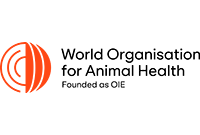World Organisation for Animal Health
Classical swine fever (CSF), also known as hog cholera, is a contagious viral disease of domestic and wild swine. It is caused by a virus of the genus Pestivirus of the family Flaviviridae, which is closely related to the viruses that cause bovine viral diarrhoea in cattle and border disease in sheep. There is only one serotype of CSF virus (CSFV). CSF is a disease listed by the World Organisation for Animal Health (WOAH, founded as OIE) Terrestrial Animal Health Code and must be reported to the organisation.
CSF is endemic in many parts of Asia and the Pacific and has been eradicated in Australia and New Zealand.
CSF is one of the diseases for which WOAH has a procedure for the official recognition of disease status. The official recognition of disease status of Members is of great significance for international trade and constitutes one of the most important legal links between WOAH and World Trade Organization (WTO).
List of CSF free Members: Australia and New Zealand
Suspension/reinstatement of status: In 2018, Japan confirmed CSF and its disease- free status was suspended.
Following the immediate notification to WOAH from the Delegate of Japan confirming an outbreak of CSF in Gifu City, the “CSF free country” status of Japan, as recognised by the WOAH World Assembly of Delegates in terms of Resolution No. 24 in May 2015, was suspended with effect from 3 September 2018.
In Asia and the Pacific region, there are 4 Reference Laboratories for CSF, which are located in Australia, P.R.China, Japan and Chinese Taipei. They provide technical advice and can offer training opportunities for personnel from OIE Members. They coordinate studies to progress scientific and technical understanding and capacity building in collaboration with other laboratories or organisations, including through the Laboratory Twinning programmes. WOAH Members in the region have been submitting CSF samples (free-of-cost) for disease confirmation and molecular characterization to reference laboratories, greatly strengthening surveillance, diagnosis and implementation of control activities.
